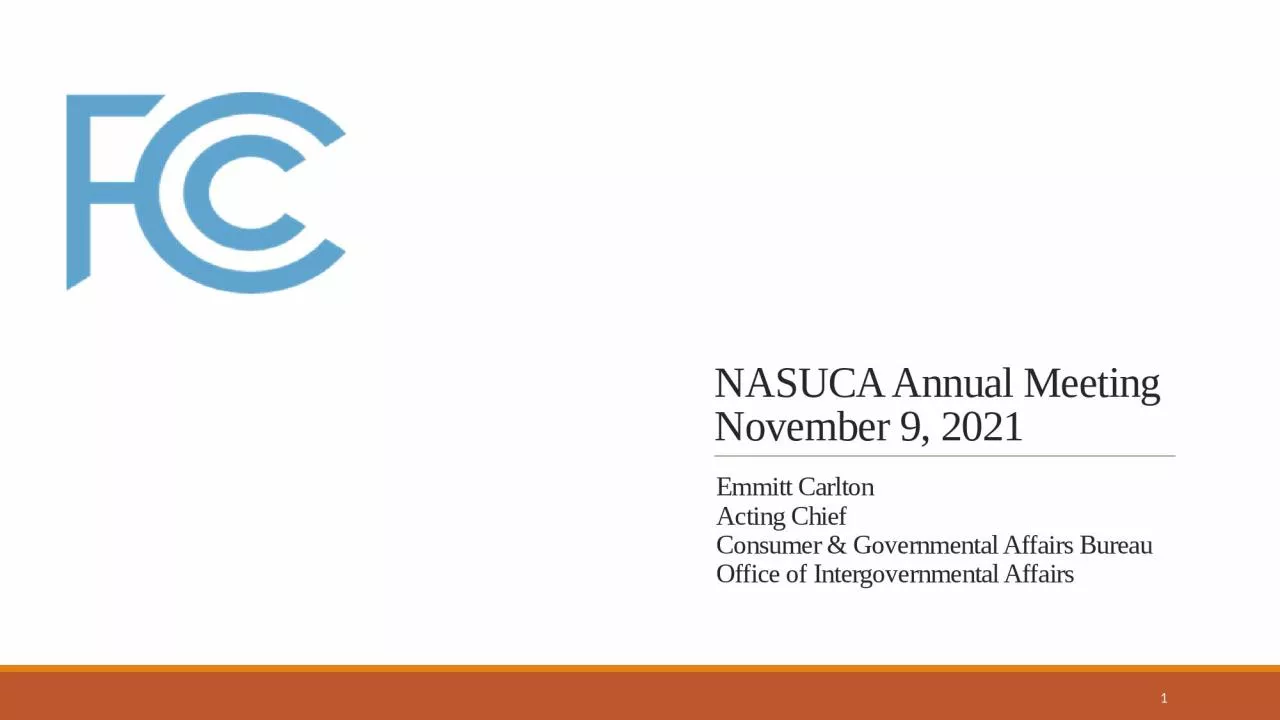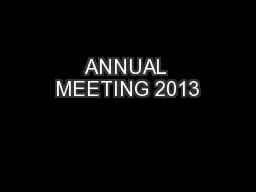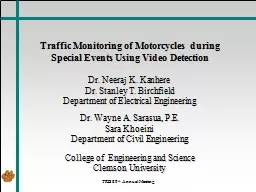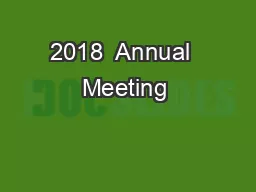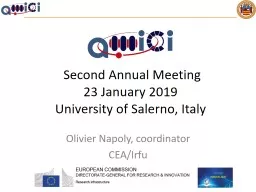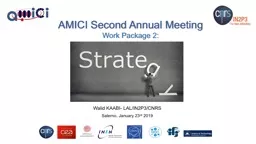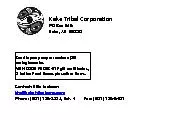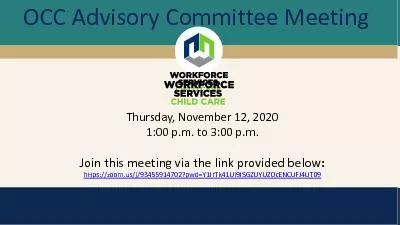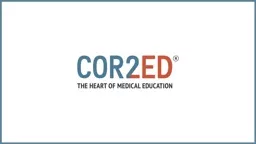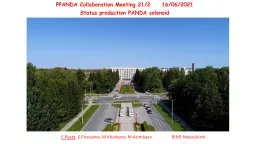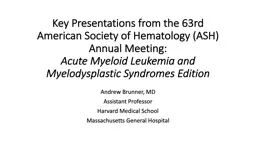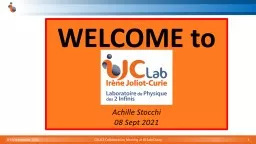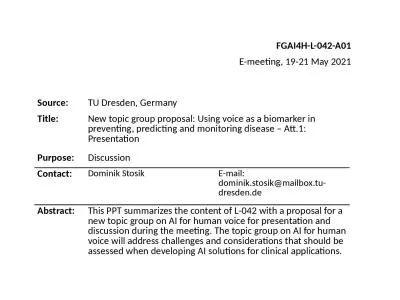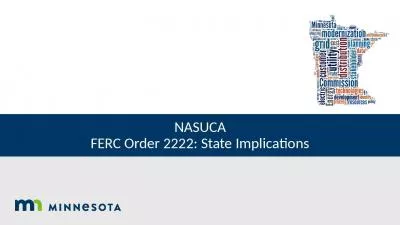PPT-NASUCA Annual Meeting November 9, 2021
Author : Tigerwoods | Published Date : 2022-08-02
Emmitt Carlton Acting Chief Consumer amp Governmental Affairs Bureau Office of Intergovernmental Affairs 1 Outline Overview of CGB IGA and IAC Emergency Connectivity
Presentation Embed Code
Download Presentation
Download Presentation The PPT/PDF document "NASUCA Annual Meeting November 9, 2021" is the property of its rightful owner. Permission is granted to download and print the materials on this website for personal, non-commercial use only, and to display it on your personal computer provided you do not modify the materials and that you retain all copyright notices contained in the materials. By downloading content from our website, you accept the terms of this agreement.
NASUCA Annual Meeting November 9, 2021: Transcript
Download Rules Of Document
"NASUCA Annual Meeting November 9, 2021"The content belongs to its owner. You may download and print it for personal use, without modification, and keep all copyright notices. By downloading, you agree to these terms.
Related Documents

